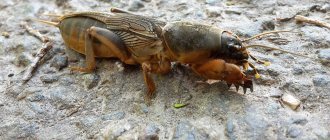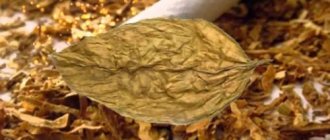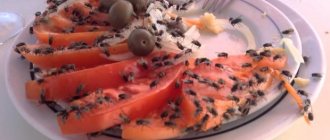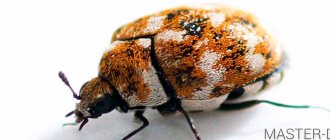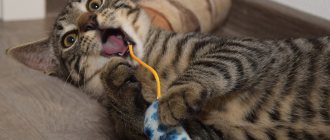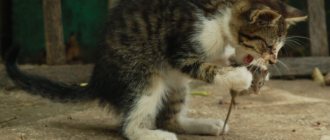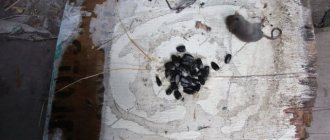There are so many things summer residents have to fight for the quality of their harvest! But no matter what measures are taken, there is someone nearby who just dreams of nibbling carrots or potatoes in the pantry, ruining the flowers in the flowerbed, or doing some other damage. In general, mice do not sleep.
Trying to fight these rodents, summer residents use any means - using strategic thinking, setting up different types of mousetraps and generously scattering poison in the corners.
To some, these methods of getting rid of the mouse “army” will seem inhumane. In addition, pets or children can be harmed by mousetraps and toxic substances. And this should not be allowed under any circumstances. Therefore, you can try a relatively peaceful way to drive mice away from your area - with the help of plants. Some types of plants can be used to prepare poisoned bait, and some can scare away uninvited tailed lovers of other people's crops with their smell or the presence of thorns.
And what kind of plants are these?
Daffodils
More precisely, not the flowers themselves, but their dug up bulbs. To protect plantings of root crops (potatoes, carrots) from mice, in the summer they dig up daffodil bulbs and distribute them over the entire area of the beds, mixed with coriander stems, and then cover them with mulch.
Daffodils are able to protect against mice and their bulbous “colleagues in the flowerbed” - tulips. Mice are always ready to taste their bulbs. To protect these flowers, daffodil bulbs of low-growing species are planted around the tulip bed in the fall.
Herbs protectors
Plants used to control rodents are divided into three categories:
- plants that repel mice due to their repellent properties: pests cannot tolerate their smell;
- prickly grasses - the valuable properties of such plants are the thorns that dig into the skin of animals, due to which rodents avoid them;
- natural insecticides - we are talking about poisonous plants that are used to prepare baits.
Read below about which plants mice are afraid of.
Plant baits
If mice do not want to leave your area in an amicable way, it is time to move on to a more severe means of control - baits.
The plants from which baits are made are very poisonous. Don't forget about safety precautions.
Here are some bait recipes:
- grind crow's eye rhizome (5 g) and sunflower seeds (100 g);
- prepare powder from tubers of aconite antidote (50 g) and mix it with 1 kg of cereal or flour;
- prepare an infusion of Lobel's hellebore rhizomes. This remedy for getting rid of mice is prepared as follows: 100 g of rhizomes are kept in 200 ml of water for 4-5 days, adding a little hydrochloric acid to the decoction. Then grain is poured into the finished infusion and waited until it swells;
- Grind the castor bean seeds and mix them with unrefined vegetable oil.
Baits are placed in places accessible to mice. Rodents will happily eat foods diluted with poison (flour, cereal, sunflower seeds, grain), and after such a treat you are unlikely to see uninvited tailed guests on your site.
All means are good in the fight against mice. However, many summer residents want to solve this problem in a civilized way. For example, drive away mice with plants.
Do you have your own proven means of combating these rodents? Share in the comments!
Plants that repel mice
Grass has been used in the fight against rodents since ancient times. The ancestors knew especially precisely which grass the mouse really disliked. The use of repellent plants and raticides allows you to preserve the crop in the area from rodents.
Used in wrestling:
- repellent herbs;
- poisonous raticides leading to death.
The method of getting rid of mice using grass is very effective and safe for humans. The grass also helps prevent pest infestations. There are several natural helpers.
| Repellent herbs | Properties | What pests does it work on? |
| Sagebrush | Contains acrid bitters, a natural insecticide | Rats, mice, moles |
| Tansy | Natural antiseptic | Rodents, bedbugs, mosquitoes, flies |
| Elder | Contains toxic acids | Rodents, flies, mosquitoes |
| Chamomile | Anti-inflammatory herb | Mice, rats, moles |
| Ledum | Natural insecticide | Clothes moths, flies, mosquitoes, small rodents |
| Mint | Has a calming effect | Rodents, various insects |
Herbs should be stored for storage in late summer and early autumn. You can grow special species in your garden.
Some summer residents prefer to collect herbs in the surrounding areas, in the fields. The grass is dried in the shade; it should not be laid out in direct sunlight. Then the raw material will retain all its properties.
Everyone knows that many inflorescences have healing powers. Therefore, when collecting a bouquet for herbal medicine, you can also pick plants that will help preserve the fruits and vegetables collected from gardens and orchards in the fall.
Video
If You Have This Plant in Your House, You Will Never See Mice, Spiders and Ants Again!
Sagebrush
Bitter stems are familiar to everyone. They are found everywhere in rural areas and most likely grow in or near the dacha.
It is very easy to use wormwood for mice - rodents cannot stand bitterness or a strong spicy smell. To prevent mice from getting into the area, grass is planted around the perimeter of the garden or garden.
In ancient times, rye, wheat, and oats were placed in wormwood sheaves inside rural barns. They used wormwood in the haylofts to keep mice away.
It is recommended to tie sheaves of wormwood and fruit trees - then the mouse will not chew the bark. The grass perfectly repels crop destroyers that can spoil the harvest.
The use of wormwood is advisable for preserving any fruits, vegetables, and grains from mice.
To protect cellars and pantries from mice, wormwood bouquets are laid out in the corners of the room, as well as along the walls. Dry grass does not lose its properties after being collected and dried.
That is why plants are widely used in folk medicine. The pungent wormwood smell persists well after drying the inflorescences.
Tansy
It has a camphor aroma that rodents cannot stand. In summer fields and meadows, the aroma of tansy is clearly audible to those who collect herbs.
Natural insecticide repels not only mice, but also insects:
- mole;
- bedbugs;
- flies;
- codling moth;
- butterflies;
- mosquitoes
The inflorescences and stems contain acids, the aroma of which is unbearable for pests. The smell causes the mouse to leave the house or area. To protect the future harvest from mice, it is recommended to plant tansy around the perimeter of the site.
Flowers and plant shoots are especially popular among housewives . Tansy from mice works not only in vegetable gardens, but also in warehouses.
By hanging a fragrant bunch in the pantry or cellar, you can be sure that there are no midges or mice. Raw materials are laid out in the kitchen and pantry. There will be no flies or mosquitoes on the site if this type of crop grows in the garden.
Elderberry for mice
Using elderberry against mice and rats will result in pests disappearing from the home for a long time. The rhizomes and leaves of the plant release hydrocyanic acid into the surrounding space, which is destructive for rodents. The grass is not strong enough to poison animals, but it may well drive them out of their favorite place.
A reliable protector of the garden, mouse crops grow in clearings; grass can be found near the house. The fruits are red or black. Gardeners widely use this herb for pest control.
Elderberry also has a negative effect on insects. If you want to enjoy the absence of mosquitoes and midges in the evenings, be sure to plant elderberry bushes on your site. The strong smell will cause panic in mice.
Ledum
In the garden, wild rosemary can grow up to 200 cm. Straight, fragrant shrubs, with proper care, will become a natural decoration of any garden.
The grass has a branched root that contains acids and substances that negatively affect the sense of smell of small animals. Rodents cannot stand the aroma of wild rosemary.
Sheaves can be used to fumigate warehouses and houses, as well as garden plots. Ledum should be used against mice very often - the desired area should be fumigated twice a day for a week or more. Elderberry branches are also used to cover beds and tie around fruit trees.
Ledum sprigs are also laid out in corners, along the perimeter in warehouses and pantries. The herb is effective against clothes moths, so it is advisable to leave bunches inside cabinets and chests. They will reliably protect things from pests.
Blackroot Ratrunner
If you don't know what herb repels mice and rats, take blackroot ratwort. The raw materials can be used fresh or dried.
To expel pests, a remedy is prepared - parts of the root and seeds are crushed, after which bait is added to the resulting powder. Place the pieces in the corners, along the walls of warehouses, storage rooms, loggias.
Benefits of blackroot:
- the smell is not felt by people;
- does not affect dogs and cats;
- effectively repels mice.
It is recommended to add rat chaser to hay and fill up discovered mouse holes with it. The grass should be placed in rodent habitats, as well as in boxes with harvest. The mice begin to walk around the areas with the bundles laid out. Some people use a decoction of the root and leaves as a poisonous remedy.
Chamomile
Everyone knows this healing herb that helps fight flu and colds. However, not everyone knows which grass repels mice from the house.
Chamomile is also an effective remedy in the fight against tailed pests. To get rid of uninvited guests, mouse paths are generously sprinkled with chamomile inflorescences.
People have long dried chamomile in the shade on summer evenings to treat various ailments. However, in village barns, workers laid out fragrant inflorescences in the corners and mixed them with hay.
Then the mouse did not spoil the harvest and did not appear in the hayloft. Today, many farm owners use the old method of getting rid of mice using chamomile inflorescences.
It is recommended to place dry or freshly picked chamomile inside warehouses, pantries, and on shelves where food supplies are stored.
The scent of grass will prevent rodents from moving around the room calmly. Mice cannot stand the chamomile scent and rush to leave the room.
Wild mint
Thin stems and leaves exude an aroma that is pleasant to humans, but extremely disgusting to rodents. The grass helps to get rid of mice in the house quite quickly - just lay out bunches of mint in the pantry where the pests have infested.
The grass is easy to find in the wild and grows on slopes and hills. You can find mint in summer cottages, near ponds, and in city courtyards.
Fresh herbs can be used to fumigate small rooms and garden areas . If you plant mint in the yard, the smell under the windows will be very pleasant, and insects and mice will avoid the house. It is good to plant coriander under the windows; it will also scare away uninvited tailed guests.
If cilantro grows in the garden, it can be used not only in cooking. The leaves are laid out on shelves with food for various pests and ants. In the cellar, the leaves will also protect vegetables and fruits.
Elder
Another plant that is extremely unpleasant for rodents.
They cannot stand its smell, and the red elderberries are poisonous. To protect against pests, it is worth planting elderberry bushes near outbuildings where supplies and seed material are stored.
The branches of the plant are also used to wrap tree trunks for the winter and laid out in basements where vegetables are stored.
Marsh rosemary
Another effective remedy is wild rosemary for mice. It is also effective against various harmful insects: flies, mosquitoes. Rodents will not enter a house in the rooms of which wild rosemary branches with leaves will be laid out
Important!
The smell of a plant characterized by a high content of essential components can provoke negative consequences in the form of malaise and headaches among the inhabitants of the house. Therefore, it is still not worth abusing it.
Chamomile
Chamomile will not only pleasantly diversify the landscape of the site, but will also help protect it from rats and mice - they do not like the aroma of this plant.
To protect against rodents, dried chamomile bouquets are hung in utility rooms, summer kitchens, sheds and garages.
Chamomile flowers can be scattered on the floor of the attic or filled with them into holes in which animals are hiding.
Tansy
Tansy has a pronounced insecticidal effect. The plant repels rodents, as well as flies, mosquitoes, fleas, bedbugs and midges.
Hanging bunches of plants in rooms will help protect against pests. You can also place the inflorescences on shelves in the basement or pantry and sprinkle the surfaces with powder made from dried herbs.
The plants we talked about are easy to find in any garden. We hope our tips will help you.
Rodent deterrent method
To fight an enemy, you should study his weaknesses. Mice are incredibly clean, so clinging to plant organs is one of the methods of deterrence. The same black root, or dog's tongue, so nicknamed for the rough but tenacious surface of the seeds, completely covered with thorns, is considered the thunderstorm of mice. By clinging to thorns, mice leave the dangerous place.
Mice also do not like the rough seeds of thistle, from which you can collect about 6,500 pieces, and the tripartite seed, in which the outer edges of the achene and awn are covered with spines.
Burdock (burdock) inflorescences have outer involucre leaves that end in a small hook. In storage facilities, the prickly seeds and baskets of these plants are scattered around tall boxes, discouraging mice from climbing higher or jumping. Tree trunks are also tied with raspberry shoots, as they have thin thorns at the bottom.
https://vsaduidoma.com/2010/08/21/rasteniya-dlya-dachi-otpugivayushhie-gryzunov/
Sagebrush
Many summer residents mercilessly destroy this plant as a weed.
However, it is worth leaving wormwood bushes around the perimeter of the summer cottage so that its smell repels rodents. Bunches of plants placed in the pantry will discourage rats from feasting on the supplies. By the way, wormwood will help get rid of not only mice, but also other pests:
● bunches of wormwood placed in a dog's kennel will help your pet solve its flea problem;
● if you use the stems to wrap the trunks of fruit trees for the winter, this will protect them from damage.
How to get rid of mice in the house
Traps and poisons are effective, but inhumane ways to combat
Mice in the house - unwanted guests, whom they try to get rid of as quickly as possible. They spoil food and furniture, can become sources of dangerous diseases and spread an unpleasant odor.
There are a large number of ways to get rid of rodents, but they are all divided into 2 types:
- Scaring off with strong pungent odors or ultrasound, getting a cat (fear of cats is inherent in rodents by nature). The mice leave the apartment and do not return. This is a more humane option for the animals, but it does not always work. For example, mice may get used to ultrasound and be in no hurry to leave;
- Destruction by chemical poisons (for example, Dichlorvos), folk recipes or traps. These are more radical methods in which rodents are completely destroyed. However, these options can hardly be called pleasant: it is necessary to remove the corpses of animals, some may have time to hide and begin to decompose.
Important! To solve the problem, some manufacturers produce poisons with a mummifying effect (the corpse does not decompose, but dries out, there is no smell) or products whose action is based on suffocation (mice run out into the street in panic).
When choosing how to repel mice, it is important to take into account many nuances: the presence of children and pets in the house (they may accidentally swallow poisonous bait), the ability to quickly find corpses before they begin to decompose, accommodation of allergy sufferers who may not be suitable for repellers with strong odors, etc.
Field mint
The aroma of bunches of dry wild mint placed in the room where food is stored will repel tailed thieves.
To protect the house, you can plant a plant around the perimeter of the foundation. Mint will also help cope with insects. Its smell cannot be tolerated by ants, mosquitoes and even moths. Hang dried mint bouquets or bags of dry plants in your rooms, in your closet, in your dressing room - and forget about annoying insects.
How to use scents correctly
In order for aromatic substances to have the desired effect, they must be used correctly. There are a number of rules that should be followed:
- Essential oils are placed in close proximity to animal burrows. The liquid must be applied to a cotton pad or napkin. You can smear the corners of the room. In apartments, it is recommended to add oils to the water for washing floors.
- Dried herbs will smell longer if they are placed in cloth bags and tied.
- Fresh plants quickly lose their aroma, so they need to be replaced periodically.
- Rodents quickly get used to some smells. It is worth alternating scents.
- For maximum effectiveness, several different herbs can be used together.
It is dangerous to use plants that are toxic and allergenic at home. It is better to give preference to herbs such as chamomile, mint, lemon balm.


